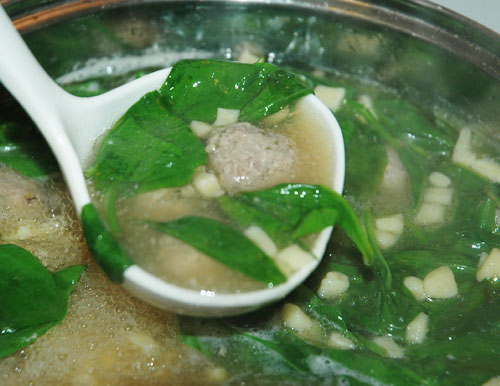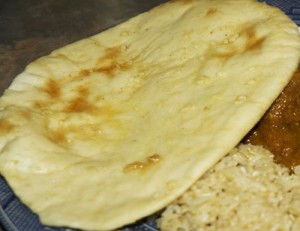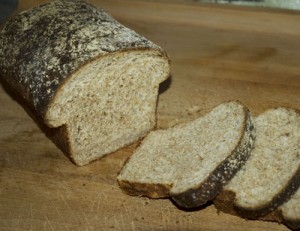There are a few choices when it comes to what kind of yeast home bakers have available to them. I only have experience with two kinds, instant yeast and active dry yeast. These are the most common yeasts called for in home baking recipes. When first learning how to bake bread I would follow each recipe to the letter. Since some recipes call for active dry yeast and others for instant, I simply made sure I had both on hand. This works, but it is a little inconvenient. Really, yeast is yeast. Which ever form you choose to use, it is the same organism and it will do the same thing to your dough. No matter what kind of yeast a recipe calls for, if you know how to substitute for your favourite kind, then you can confidently alter bread recipes.
So, What is the difference between different kinds of yeasts? Why choose one over the other? It is a matter of feel, ease of use, storage, and cost. Remember, no matter what kind you use you can get the same results as though you used another kind of yeast, but the way you use it will vary. Therefor I recommend trying a few different kinds until you find the one that suites your style best. Then you can learn how to substitute your type of yeast in recipes that call for another kind.
This is definitely not an exhaustive list, but here are a few common types of yeast that you may see in the grocery store.
Cake Yeast – This is the traditional fresh yeast known to home bakers from decades past. It is still widely available and is often used commercially, but sometimes harder to find than dry yeasts. It has a short shelf life, but can be frozen for a few months to keep it fresh a little longer. It is not called for in most home baking recipes these days, as other kinds of yeast are easier to use (I know, that is a subjective) and store better. Some people dissolve it in water before adding to the other dough ingredients, while others say it works just as well simply by crumbling it into the flour. I have never used this yeast myself.
Active Dry Yeast – This is the traditional dry yeast. It is sold in packets or jars and consists of small pellets that contain dried hibernating yeast. In order to use this yeast in a dough recipe, it must be activated by dissolving it in warm water (approximately 105 to 115 degrees F) usually with a little bit of sugar, to feed it. It is then allowed to “proof” for a few minutes until the water becomes foamy. This is when you will know that the yeast is alive and active. This form of yeast stays fresh for many months in the refrigerator and around a year and sometimes more, in the freezer.
Wednesday
Apr 27, 2011
It doesn’t matter how many years you have been a successful chef or what famous culinary school you went to, whatever you think the important differences between stock and broth are, there will surely be others with similarly impressive credentials as you, who have different opinions.
There is a difference, but I think it’s more of a spectrum than a black or white issue. Some say that stocks are merely simmered bones with no seasoning, vegetables or other ingredients involved, while broth is boiled meat with vegetables and sometimes spices and seasoning added to the mix. Others say that both broth and stock can contain bones as well as meat, but the important difference is the ratio of meat to bone, whereas a stock would contain more bone and visa versa. Another opinion is that broths are merely flavoured stocks. Still others say broth is stock that is being used in a soup. Salt content is sometimes described as being the critical difference as well. Sifting through the intricacies of the arguments can become quite tedious.
If forced to ultimately distinguish between the two I would say that they are the same, save that stocks are made with bones and broths are made with meat. Stocks are thick and gelatinous like jello when cooled because of the collagen that is extracted from the bones and connective tissues while simmering. The gelatinous quality of stock makes it better than broth for deglazing pans and is often used in place of butter or cream to make sauces in this way. Pure broth will stay liquid when cooled and will not taste quite as rich as a stock. This can be a desirable quality for light soups and other recipes that require a lighter flavour. It seems that many people feel that stocks should not include vegetables, but I don’t see any reason why they should not. I feel that if the dish you are preparing cannot do with the subtle flavours that vegetable add to a stock than one can merely make a stock without vegetables. To this Ill add that while vegetables seem to usually be required for a broth, there is no law against making a simple broth with only meat. When I make chicken broth I usually use bones and meat and the result is gelatinous when refrigerated, so I suppose that could be considered a stock, but I also put vegetables into it and use it as a base for soups, sometimes with water added to thin it if it is meant to be a light soup. The important thing, I think, is to use what is best for the recipe and call it what you like, whether it falls directly into the pure definition of the word or not.
To summarize, in my non-expert opinion stock and broth can be considered the same thing. You may choose to make a gelatinous broth by using bones or meat and bone combination or you can use only meat for a lighter result. Either way it will be delicious and will certainly out do anything you can buy at the store. You can detect the simplicity and taste the freshness in a homemade broth. I strongly urge you to try making it if you never have before. It takes time, but it is very little work. (recipe for chicken stock HERE)
Wednesday
Dec 15, 2010
Jump to Ingredients – Jump to Method – Jump to Printable Version
 It’s a wildly popular item to be served at Italian-American wedding receptions, especially in the North Eastern United States, and most specifically the Pennsylvania/ New Jersey areas. It is most popular in Pittsburgh Pennsylvania where it is almost always fed to a new bride and groom and said to be “energy fortification” to help them through their first night together. How romantic. So that’s why it is called Italian wedding soup, right? Well, no. It is sort of the other way around and became a wedding tradition seemingly because of its name. The name is a mistranslation of “minestra maritata” (married soup). The Italians use this term to describe how well vegetables and grains go together in a soup. It’s a good “marriage” of ingredients. In some parts of Italy the traditional soup contains meat and in others it does not. There are no hard rules as to what greens are used and the grains can take the form of a small pasta, long noodles or even beans. The meat in the soup also varies, sometimes being pork, chicken, beef, or more recently meatballs. So Italian wedding soup can take on many different forms, and people from different traditions or who have lived in different parts of the country have different concepts of what Italian wedding soup should be.
It’s a wildly popular item to be served at Italian-American wedding receptions, especially in the North Eastern United States, and most specifically the Pennsylvania/ New Jersey areas. It is most popular in Pittsburgh Pennsylvania where it is almost always fed to a new bride and groom and said to be “energy fortification” to help them through their first night together. How romantic. So that’s why it is called Italian wedding soup, right? Well, no. It is sort of the other way around and became a wedding tradition seemingly because of its name. The name is a mistranslation of “minestra maritata” (married soup). The Italians use this term to describe how well vegetables and grains go together in a soup. It’s a good “marriage” of ingredients. In some parts of Italy the traditional soup contains meat and in others it does not. There are no hard rules as to what greens are used and the grains can take the form of a small pasta, long noodles or even beans. The meat in the soup also varies, sometimes being pork, chicken, beef, or more recently meatballs. So Italian wedding soup can take on many different forms, and people from different traditions or who have lived in different parts of the country have different concepts of what Italian wedding soup should be.
This recipe will be dealing with the North Eastern United States concept of the soup. There are many variables and I will be pointing some of them out, but this recipe makes an amazing Italian wedding soup any Italian-American cook would be proud to serve.
Using a few premade ingredients this soup can be prepared in about 20 minutes, or if you want to make it completely from scratch it can take many hours. The choice is yours. It merely depends on the time you are able or willing to spend on making it. This recipe makes approximately 2 liters ( around 6 servings) worth of soup.
Friday
Dec 3, 2010


